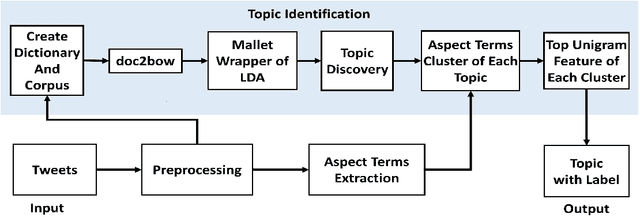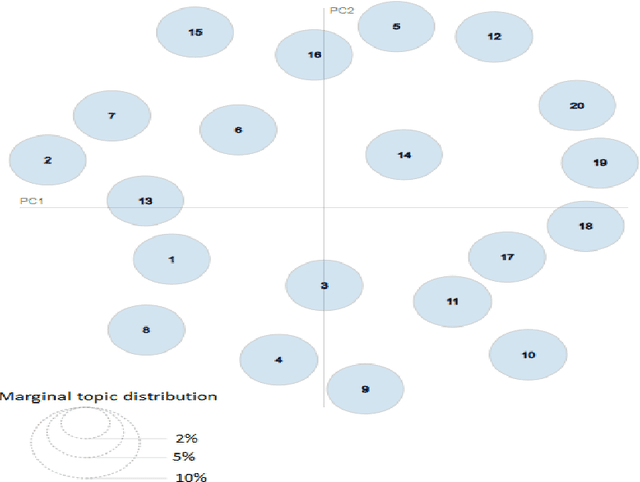Mohammad Ali Moni
Multimodal Marvels of Deep Learning in Medical Diagnosis: A Comprehensive Review of COVID-19 Detection
Jan 16, 2025



Abstract:This study presents a comprehensive review of the potential of multimodal deep learning (DL) in medical diagnosis, using COVID-19 as a case example. Motivated by the success of artificial intelligence applications during the COVID-19 pandemic, this research aims to uncover the capabilities of DL in disease screening, prediction, and classification, and to derive insights that enhance the resilience, sustainability, and inclusiveness of science, technology, and innovation systems. Adopting a systematic approach, we investigate the fundamental methodologies, data sources, preprocessing steps, and challenges encountered in various studies and implementations. We explore the architecture of deep learning models, emphasising their data-specific structures and underlying algorithms. Subsequently, we compare different deep learning strategies utilised in COVID-19 analysis, evaluating them based on methodology, data, performance, and prerequisites for future research. By examining diverse data types and diagnostic modalities, this research contributes to scientific understanding and knowledge of the multimodal application of DL and its effectiveness in diagnosis. We have implemented and analysed 11 deep learning models using COVID-19 image, text, and speech (ie, cough) data. Our analysis revealed that the MobileNet model achieved the highest accuracy of 99.97% for COVID-19 image data and 93.73% for speech data (i.e., cough). However, the BiGRU model demonstrated superior performance in COVID-19 text classification with an accuracy of 99.89%. The broader implications of this research suggest potential benefits for other domains and disciplines that could leverage deep learning techniques for image, text, and speech analysis.
MGAN-CRCM: A Novel Multiple Generative Adversarial Network and Coarse-Refinement Based Cognizant Method for Image Inpainting
Dec 25, 2024Abstract:Image inpainting is a widely used technique in computer vision for reconstructing missing or damaged pixels in images. Recent advancements with Generative Adversarial Networks (GANs) have demonstrated superior performance over traditional methods due to their deep learning capabilities and adaptability across diverse image domains. Residual Networks (ResNet) have also gained prominence for their ability to enhance feature representation and compatibility with other architectures. This paper introduces a novel architecture combining GAN and ResNet models to improve image inpainting outcomes. Our framework integrates three components: Transpose Convolution-based GAN for guided and blind inpainting, Fast ResNet-Convolutional Neural Network (FR-CNN) for object removal, and Co-Modulation GAN (Co-Mod GAN) for refinement. The model's performance was evaluated on benchmark datasets, achieving accuracies of 96.59% on Image-Net, 96.70% on Places2, and 96.16% on CelebA. Comparative analyses demonstrate that the proposed architecture outperforms existing methods, highlighting its effectiveness in both qualitative and quantitative evaluations.
Exploring Gene Regulatory Interaction Networks and predicting therapeutic molecules for Hypopharyngeal Cancer and EGFR-mutated lung adenocarcinoma
Feb 27, 2024Abstract:With the advent of Information technology, the Bioinformatics research field is becoming increasingly attractive to researchers and academicians. The recent development of various Bioinformatics toolkits has facilitated the rapid processing and analysis of vast quantities of biological data for human perception. Most studies focus on locating two connected diseases and making some observations to construct diverse gene regulatory interaction networks, a forerunner to general drug design for curing illness. For instance, Hypopharyngeal cancer is a disease that is associated with EGFR-mutated lung adenocarcinoma. In this study, we select EGFR-mutated lung adenocarcinoma and Hypopharyngeal cancer by finding the Lung metastases in hypopharyngeal cancer. To conduct this study, we collect Mircorarray datasets from GEO (Gene Expression Omnibus), an online database controlled by NCBI. Differentially expressed genes, common genes, and hub genes between the selected two diseases are detected for the succeeding move. Our research findings have suggested common therapeutic molecules for the selected diseases based on 10 hub genes with the highest interactions according to the degree topology method and the maximum clique centrality (MCC). Our suggested therapeutic molecules will be fruitful for patients with those two diseases simultaneously.
Machine learning-based network intrusion detection for big and imbalanced data using oversampling, stacking feature embedding and feature extraction
Jan 22, 2024Abstract:Cybersecurity has emerged as a critical global concern. Intrusion Detection Systems (IDS) play a critical role in protecting interconnected networks by detecting malicious actors and activities. Machine Learning (ML)-based behavior analysis within the IDS has considerable potential for detecting dynamic cyber threats, identifying abnormalities, and identifying malicious conduct within the network. However, as the number of data grows, dimension reduction becomes an increasingly difficult task when training ML models. Addressing this, our paper introduces a novel ML-based network intrusion detection model that uses Random Oversampling (RO) to address data imbalance and Stacking Feature Embedding based on clustering results, as well as Principal Component Analysis (PCA) for dimension reduction and is specifically designed for large and imbalanced datasets. This model's performance is carefully evaluated using three cutting-edge benchmark datasets: UNSW-NB15, CIC-IDS-2017, and CIC-IDS-2018. On the UNSW-NB15 dataset, our trials show that the RF and ET models achieve accuracy rates of 99.59% and 99.95%, respectively. Furthermore, using the CIC-IDS2017 dataset, DT, RF, and ET models reach 99.99% accuracy, while DT and RF models obtain 99.94% accuracy on CIC-IDS2018. These performance results continuously outperform the state-of-art, indicating significant progress in the field of network intrusion detection. This achievement demonstrates the efficacy of the suggested methodology, which can be used practically to accurately monitor and identify network traffic intrusions, thereby blocking possible threats.
An efficient deep learning model to categorize brain tumor using reconstruction and fine-tuning
May 22, 2023Abstract:Brain tumors are among the most fatal and devastating diseases, often resulting in significantly reduced life expectancy. An accurate diagnosis of brain tumors is crucial to devise treatment plans that can extend the lives of affected individuals. Manually identifying and analyzing large volumes of MRI data is both challenging and time-consuming. Consequently, there is a pressing need for a reliable deep learning (DL) model to accurately diagnose brain tumors. In this study, we propose a novel DL approach based on transfer learning to effectively classify brain tumors. Our novel method incorporates extensive pre-processing, transfer learning architecture reconstruction, and fine-tuning. We employ several transfer learning algorithms, including Xception, ResNet50V2, InceptionResNetV2, and DenseNet201. Our experiments used the Figshare MRI brain tumor dataset, comprising 3,064 images, and achieved accuracy scores of 99.40%, 99.68%, 99.36%, and 98.72% for Xception, ResNet50V2, InceptionResNetV2, and DenseNet201, respectively. Our findings reveal that ResNet50V2 achieves the highest accuracy rate of 99.68% on the Figshare MRI brain tumor dataset, outperforming existing models. Therefore, our proposed model's ability to accurately classify brain tumors in a short timeframe can aid neurologists and clinicians in making prompt and precise diagnostic decisions for brain tumor patients.
HARDC : A novel ECG-based heartbeat classification method to detect arrhythmia using hierarchical attention based dual structured RNN with dilated CNN
Mar 06, 2023Abstract:In this paper have developed a novel hybrid hierarchical attention-based bidirectional recurrent neural network with dilated CNN (HARDC) method for arrhythmia classification. This solves problems that arise when traditional dilated convolutional neural network (CNN) models disregard the correlation between contexts and gradient dispersion. The proposed HARDC fully exploits the dilated CNN and bidirectional recurrent neural network unit (BiGRU-BiLSTM) architecture to generate fusion features. As a result of incorporating both local and global feature information and an attention mechanism, the model's performance for prediction is improved.By combining the fusion features with a dilated CNN and a hierarchical attention mechanism, the trained HARDC model showed significantly improved classification results and interpretability of feature extraction on the PhysioNet 2017 challenge dataset. Sequential Z-Score normalization, filtering, denoising, and segmentation are used to prepare the raw data for analysis. CGAN (Conditional Generative Adversarial Network) is then used to generate synthetic signals from the processed data. The experimental results demonstrate that the proposed HARDC model significantly outperforms other existing models, achieving an accuracy of 99.60\%, F1 score of 98.21\%, a precision of 97.66\%, and recall of 99.60\% using MIT-BIH generated ECG. In addition, this approach substantially reduces run time when using dilated CNN compared to normal convolution. Overall, this hybrid model demonstrates an innovative and cost-effective strategy for ECG signal compression and high-performance ECG recognition. Our results indicate that an automated and highly computed method to classify multiple types of arrhythmia signals holds considerable promise.
A Dependable Hybrid Machine Learning Model for Network Intrusion Detection
Dec 08, 2022Abstract:Network intrusion detection systems (NIDSs) play an important role in computer network security. There are several detection mechanisms where anomaly-based automated detection outperforms others significantly. Amid the sophistication and growing number of attacks, dealing with large amounts of data is a recognized issue in the development of anomaly-based NIDS. However, do current models meet the needs of today's networks in terms of required accuracy and dependability? In this research, we propose a new hybrid model that combines machine learning and deep learning to increase detection rates while securing dependability. Our proposed method ensures efficient pre-processing by combining SMOTE for data balancing and XGBoost for feature selection. We compared our developed method to various machine learning and deep learning algorithms to find a more efficient algorithm to implement in the pipeline. Furthermore, we chose the most effective model for network intrusion based on a set of benchmarked performance analysis criteria. Our method produces excellent results when tested on two datasets, KDDCUP'99 and CIC-MalMem-2022, with an accuracy of 99.99% and 100% for KDDCUP'99 and CIC-MalMem-2022, respectively, and no overfitting or Type-1 and Type-2 issues.
Machine Learning-based Lung and Colon Cancer Detection using Deep Feature Extraction and Ensemble Learning
Jun 03, 2022



Abstract:Cancer is a fatal disease caused by a combination of genetic diseases and a variety of biochemical abnormalities. Lung and colon cancer have emerged as two of the leading causes of death and disability in humans. The histopathological detection of such malignancies is usually the most important component in determining the best course of action. Early detection of the ailment on either front considerably decreases the likelihood of mortality. Machine learning and deep learning techniques can be utilized to speed up such cancer detection, allowing researchers to study a large number of patients in a much shorter amount of time and at a lower cost. In this research work, we introduced a hybrid ensemble feature extraction model to efficiently identify lung and colon cancer. It integrates deep feature extraction and ensemble learning with high-performance filtering for cancer image datasets. The model is evaluated on histopathological (LC25000) lung and colon datasets. According to the study findings, our hybrid model can detect lung, colon, and (lung and colon) cancer with accuracy rates of 99.05%, 100%, and 99.30%, respectively. The study's findings show that our proposed strategy outperforms existing models significantly. Thus, these models could be applicable in clinics to support the doctor in the diagnosis of cancers.
A Dynamic Topic Identification and Labeling Approach of COVID-19 Tweets
Aug 13, 2021



Abstract:This paper formulates the problem of dynamically identifying key topics with proper labels from COVID-19 Tweets to provide an overview of wider public opinion. Nowadays, social media is one of the best ways to connect people through Internet technology, which is also considered an essential part of our daily lives. In late December 2019, an outbreak of the novel coronavirus, COVID-19 was reported, and the World Health Organization declared an emergency due to its rapid spread all over the world. The COVID-19 epidemic has affected the use of social media by many people across the globe. Twitter is one of the most influential social media services, which has seen a dramatic increase in its use from the epidemic. Thus dynamic extraction of specific topics with labels from tweets of COVID-19 is a challenging issue for highlighting conversation instead of manual topic labeling approach. In this paper, we propose a framework that automatically identifies the key topics with labels from the tweets using the top Unigram feature of aspect terms cluster from Latent Dirichlet Allocation (LDA) generated topics. Our experiment result shows that this dynamic topic identification and labeling approach is effective having the accuracy of 85.48\% with respect to the manual static approach.
Predicting Patient COVID-19 Disease Severity by means of Statistical and Machine Learning Analysis of Blood Cell Transcriptome Data
Nov 19, 2020



Abstract:Introduction: For COVID-19 patients accurate prediction of disease severity and mortality risk would greatly improve care delivery and resource allocation. There are many patient-related factors, such as pre-existing comorbidities that affect disease severity. Since rapid automated profiling of peripheral blood samples is widely available, we investigated how such data from the peripheral blood of COVID-19 patients might be used to predict clinical outcomes. Methods: We thus investigated such clinical datasets from COVID-19 patients with known outcomes by combining statistical comparison and correlation methods with machine learning algorithms; the latter included decision tree, random forest, variants of gradient boosting machine, support vector machine, K-nearest neighbour and deep learning methods. Results: Our work revealed several clinical parameters measurable in blood samples, which discriminated between healthy people and COVID-19 positive patients and showed predictive value for later severity of COVID-19 symptoms. We thus developed a number of analytic methods that showed accuracy and precision for disease severity and mortality outcome predictions that were above 90%. Conclusions: In sum, we developed methodologies to analyse patient routine clinical data which enables more accurate prediction of COVID-19 patient outcomes. This type of approaches could, by employing standard hospital laboratory analyses of patient blood, be utilised to identify, COVID-19 patients at high risk of mortality and so enable their treatment to be optimised.
 Add to Chrome
Add to Chrome Add to Firefox
Add to Firefox Add to Edge
Add to Edge